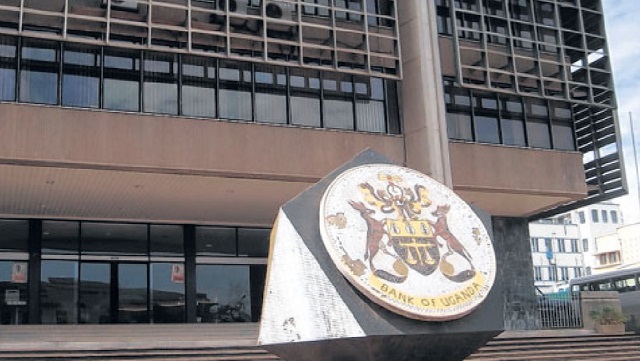
Bank of Uganda is optimistic the economy will recover amidst challenges
Kampala, Uganda | JULIUS BUSINGE | Can Uganda’s economy recover at a much needed speed amidst threats posed by COVID-19? This is the question that the Bank of Uganda technical managers seem to be pondering with as they keep an eye on the performance of the economy that has been battered by coronavirus pandemic.
Releasing the monetary policy report for this month on August 10, Bank of Uganda Governor Emmanuel T. Mutebile said as the easing of the COVID-19 lockdown continues, the economy is expected to slowly recover, reflecting the effects of a slow rebound in both foreign and domestic demand and, subdued confidence on the part of households and firms.
However, he quickly added that consumers are expected to be hesitant to resume their previous spending patterns, partly due to fears of contracting the virus and uncertainty about future earnings. To make the situation even worse, those whose incomes were not affected may increase their need for precautionary savings, he added.
Further, Mutebile said low exports of goods and subdued tourism receipts are projected to continue to weigh on economic growth given weaker global demand.
“Therefore, economic growth in Financial Year (FY) 2020/21 is projected in the range of 3.0-4.0 percent, further increasing to 5.0-6.0 percent in FY 2021/22,” Mutebile said, “economic growth is consequently expected to remain below the potential growth rate until FY 2022/23,” he added.
He warned that the economic outlook is extremely uncertain, largely because of the unpredictable intensity and duration of the pandemic.
He said the downside risks to the economic growth projection include the possibility of a widespread and possibly a more severe second wave of the virus, requiring a complete lockdown in addition to the locust invasion.
Signal to lenders
So far, one of the tools that Mutebile and his technical team have been using to support the economy through lending is the policy lending rate – the Central Bank Rate – which is set every three months to give direction to commercial banks on the lending rates.
In his latest announcement, Mutebile left the CBR unchanged at 7%, adding that the central bank remains committed to providing liquidity support to Supervised Financial Institutions (SFIs).
Based on the Monetary Policy Report for August, Mutebile said the recent credit developments largely reflect BOU’s COVID-19 response measures issued to SFIs.
The report says that with the exception of June 2020, new net lending in April-May comprised mainly of capitalized interest – interest that is added to the total cost of a long-term asset or loan balance –which rose to Shs96.6bn and Shs114billion in April and May 2020 respectively largely due to loan restructuring.
In June, according to the report, net loan extensions were recorded at Shs579.7bn, of which Shs156.2bn is capitalized interest.
“There is significant discrepancy indicated by the much lower loan approvals relative to applications which reflects increased risk aversion towards borrowers,” the report reads in part.
BoU says that PSC growth has been hampered by the decline in economic activity from third quarter of 2019/20 coupled with poor asset performance. Slow growth was aggravated by business closures due to the lockdown. On an annual basis, PSC grew by 9.0% in June 2020 from 10.2% in May 2020.
Asset quality worsened in the quarter to June 2020, reflected by an increase in NPLs in the trade, building and construction, mining and quarrying, business services as well as personal and household loans sectors.
PSC to remain subdued
PSC growth is likely to remain subdued in the short-term due to weak economic growth and increased risk aversion by lenders. In the long-run, PSC is dependent on the projected economic recovery of the second half of 2020/21.
Weak credit disbursement to major economic sectors poses challenges for private investment and consumption and may further constrain economic growth prospects. On average, commercial bank lending interest rates remained largely unchanged, averaging 18.6% in the quarter to June 2020 compared to 18.9% in the previous quarter.
In terms of local currency performance, the shilling has remained largely stable during the Covid-19 environment. It depreciated by 3% against the US dollar between January and May 2020 and appreciated by 2.3% since May 2020.
Last month, the Uganda Shilling to US Dollar rate appreciated slightly by 0.9% month-on-month and depreciated by 0.2% year-on-year to an average mid-rate of Shs 3,703.54 per US dollar. The appreciation in July was on account of increased inflows from forex bureaus, coffee receipts, NGOs, remittances and offshore players amidst subdued demand.
Meanwhile, economic activity is estimated to have contracted by 3.2% in the second quarter of 2020 as a result of a combination of COVID-19 containment measures and floods.
However, Mutebile said complementary fiscal and monetary policy actions have provided a foundation for the recovery of economic activity as the lockdown is relaxed.
The Composite Index of Economic Activity (CIEA) grew by 5.7% month-on-month in June 2020, indicating a pickup in economic activity relative to the contraction registered in the three months to May 2020.
The Purchasing Managers’ Index (PMI) also continued to register improvements since May 2020 and slightly crossed the 50 mark, indicating improvements in the business environment.
 The Independent Uganda: You get the Truth we Pay the Price
The Independent Uganda: You get the Truth we Pay the Price



